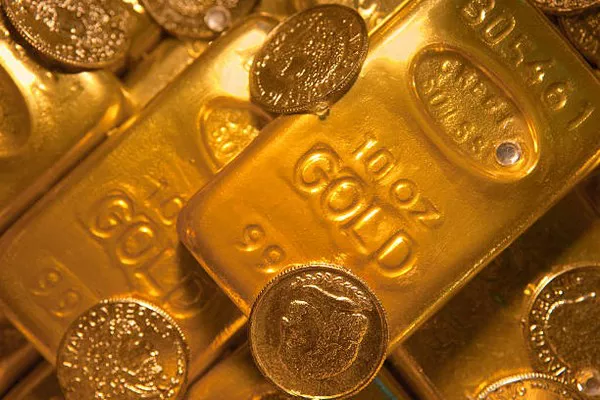In the intricate dance of financial markets, gold often holds a unique position as a traditional safe haven and hedge against economic uncertainties. One critical factor that can significantly influence the performance of gold prices is changes in interest rates. The relationship between interest rates and gold is complex, influenced by various economic factors and investor sentiments. Let’s delve into how gold tends to react when interest rates are on the rise.
The Relationship Between Interest Rates and Gold Prices
Understanding the relationship between interest rates and gold prices is essential for investors seeking to navigate volatile markets. Traditionally, gold has been seen as a non-yielding asset, meaning it doesn’t generate interest or dividends like bonds or stocks. When interest rates are low, the opportunity cost of holding gold diminishes, making the precious metal relatively more attractive. This is because investors may opt to hold gold as a store of value when alternative investments offer lower returns.
Conversely, when interest rates rise, the opportunity cost of holding gold increases. Investors may choose to shift their funds towards interest-bearing assets like bonds or savings accounts, which can offer higher returns compared to holding gold. Additionally, higher interest rates can strengthen the value of the local currency, which can put downward pressure on gold prices denominated in that currency. Therefore, a rise in interest rates can potentially lead to a decrease in demand for gold and consequently affect its price negatively.
Impact of Rising Interest Rates on Investment Demand
One significant impact of rising interest rates on gold prices is seen through changes in investment demand. Gold is often used as a hedge against inflation and currency devaluation. When interest rates are expected to rise due to increasing inflationary pressures, investors might turn to gold to preserve the value of their investments. However, the effect can vary based on investor sentiment and market conditions.
During periods of uncertainty or when inflationary expectations are high, gold may continue to be in demand despite rising interest rates. This is because investors perceive gold as a safe asset that retains its value during economic turmoil. In such scenarios, the demand for gold can remain robust, mitigating some of the downward pressure exerted by rising interest rates. On the other hand, if interest rates rise due to strong economic growth and low inflation, the attractiveness of gold as a safe haven may diminish, leading to reduced investment demand and lower prices.
Global Economic Conditions and Currency Fluctuations
Another critical aspect to consider is the broader economic landscape and currency fluctuations. Gold is traded globally and priced in U.S. dollars, which means changes in currency exchange rates can significantly impact its value. When interest rates rise in a particular country, it can strengthen the local currency relative to other currencies. This can make gold more expensive for investors in other countries, leading to a decrease in international demand and a subsequent decline in prices.
Moreover, rising interest rates in major economies like the United States can influence global financial markets and investor sentiment. If higher interest rates signal a stronger economy, it may bolster confidence in other investment opportunities, diverting funds away from gold. Conversely, if rising rates are perceived as a response to inflationary pressures or economic instability, gold may retain its appeal as a safe haven asset across different regions. Therefore, understanding how interest rate changes interact with global economic conditions and currency movements is crucial for predicting gold price movements.
Market Sentiment and Speculative Activity
The role of market sentiment and speculative activity cannot be overlooked when analyzing the impact of rising interest rates on gold prices. The gold market is influenced not only by fundamental economic factors but also by perceptions and expectations of market participants. When interest rates are expected to rise, traders and investors may adjust their positions in anticipation of potential price movements.
In some cases, speculative selling can exacerbate downward pressure on gold prices as traders liquidate their positions to avoid perceived losses. Conversely, if market sentiment remains bullish on gold despite rising interest rates, speculative buying can provide support to prices. The interplay between market sentiment, speculative activity, and fundamental economic factors underscores the dynamic nature of gold prices in response to changes in interest rates.
See Also Why Is Gold Down When Inflation Is Up
Conclusion
In conclusion, the relationship between gold prices and interest rates is multifaceted, shaped by a combination of economic, financial, and psychological factors. While rising interest rates generally pose challenges to gold as a non-yielding asset, the actual impact on gold prices can vary depending on the broader economic context and investor behavior. Ultimately, investors seeking to understand the dynamics of gold prices in response to rising interest rates must consider a holistic view of global economic conditions, currency movements, investment demand, and market sentiment. By doing so, they can make informed decisions in navigating the ever-evolving landscape of financial markets.


